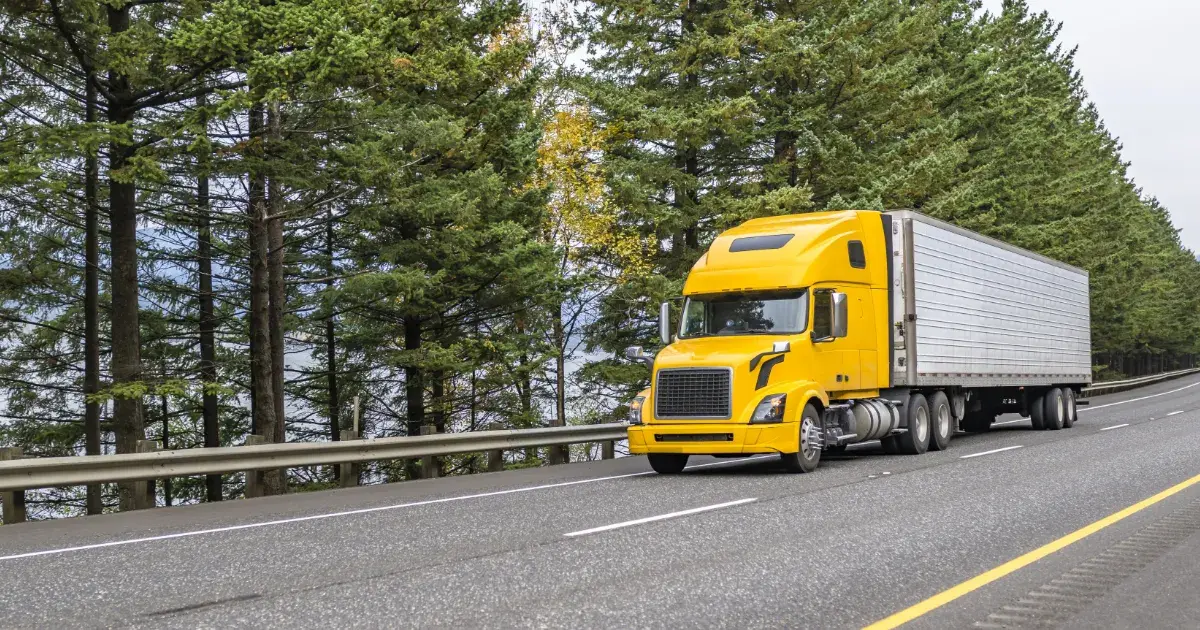Prioritizing Safety to Reduce Workers Compensation Claims in Trucking
Workplace Injuries in Trucking Go Beyond the Highway
In the trucking industry, the most visible risks often involve collisions or cargo loss. Yet, many of the costliest claims stem from incidents that happen off the road. Slips on icy steps, strains from lifting freight or falls from trailers can all result in injuries that disrupt operations and lead to significant workers compensation claims.
These incidents are often preventable. By prioritizing workplace safety and making it part of daily operations, trucking companies can reduce claim frequency and improve employee well-being, resulting in a strengthened bottom line. In this article, we outline practical safety strategies and explain how Great West Casualty Company supports carriers through proactive risk control and insurance solutions.

Why Workers Compensation Claims Are a Major Issue in Trucking
Injuries involving drivers, warehouse personnel and support staff can carry high costs. In an industry where margins are tight and schedules are demanding, workers compensation claims can introduce delays and reduce productivity.
Common injury types include:
- Sprains from loading, unloading or lifting cargo
- Falls from trailer steps, fuel islands or uneven surfaces
- Vehicle-related injuries, such as being struck by equipment or falling during entry and exit
Trucking consistently ranks among the industries with the highest rates of workplace injury. Many of these incidents involve soft tissue damage and long recovery times, increasing the total cost of each claim. Reducing their frequency is essential for operational and financial stability.

Key Safety Practices to Lower Injury Risks
The most effective way to reduce workplace injuries is to take proactive steps before incidents occur. Safety practices that focus on training, hazard identification and worker engagement can prevent many of the most common claims.
Best practices include:
- Conducting routine safety meetings and toolbox talks to reinforce awareness
- Preventing slips and falls by requiring proper footwear and keeping walkways clear
- Training employees on safe lifting techniques and using assistive equipment
- Encouraging drivers to complete thorough pre-trip inspections and use proper steps or handholds when entering or exiting the cab
- Implementing fatigue management strategies to reduce the risk of injury related to drowsiness or reduced awareness
Great West Casualty Company offers extensive Safety + Risk Control Services to help fleets implement these practices effectively. Clients have access to safety program templates, guides and tools to reinforce safety awareness, Value-Driven® video resources, and one-on-one support from risk control representatives. These tools help build consistent habits and reinforce a safety-first mindset across the operation.
How a Strong Safety Culture Reduces Claims and Insurance Costs
Safety is most effective when it is embedded into the culture of a company. Companies with mature safety cultures tend to experience fewer claims and improved morale among drivers and staff.
Benefits of a strong safety culture include:
- Lower claim frequency and reduced workers compensation expenses
- Potential savings on insurance premiums through improved risk profiles
- Greater employee retention and engagement
- Increased readiness to respond to unforeseen challenges or emergencies
Great West Casualty Company supports fleets by conducting safety culture assessments, offering tailored improvement plans, and providing in-person and virtual safety seminars. Risk Control consultants work closely with motor carriers to strengthen internal policies and measure performance over time. This collaborative approach helps companies create safer environments and more predictable claim outcomes.

Building a Safer, More Resilient Operation
Workers compensation claims can take a serious toll on trucking companies, but they don’t have to be accepted as inevitable. By taking simple, proactive steps to protect employees, fleets can reduce risk and create a safer work environment. When safety becomes a shared responsibility, the results show up in lower claims, stronger teams and better long-term outcomes.
Great West Casualty Company partners with carriers to build effective safety programs that can reduce claim exposure. To learn more, visit our Safety + Risk Control Services page or request a personalized consultation today.
The information in this article is provided as a courtesy of Great West Casualty Company to help educate and inform insureds so they can make better decisions, build a culture that values safety, and manage risk more effectively. To see what additional resources Great West Casualty Company can provide for its insureds, please contact your safety representative, or click below to find an agent.
© Great West Casualty Company 2025. The material in this publication is the property of Great West Casualty Company unless otherwise noted and may not be reproduced without its written consent by any person other than a current insured of Great West Casualty Company for business purposes. Insured should attribute use as follows: “© Great West Casualty Company 2025. Used with permission by Great West Casualty Company.”
This material is intended to be a broad overview of the subject matter and is provided for informational purposes only. Great West Casualty Company does not provide legal advice to its insureds, nor does it advise insureds on employment-related issues. Therefore, the subject matter is not intended to serve as legal or employment advice for any issue(s) that may arise in the operations of its insureds. Legal advice should always be sought from the insured’s legal counsel. Great West Casualty Company shall have neither liability nor responsibility to any person or entity with respect to any loss, action, or inaction alleged to be caused directly or indirectly as a result of the information contained herein.



